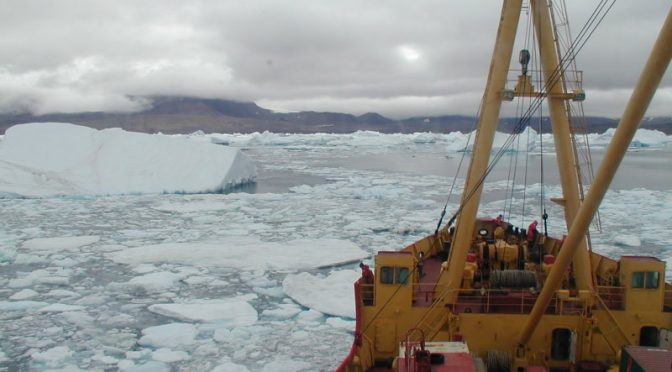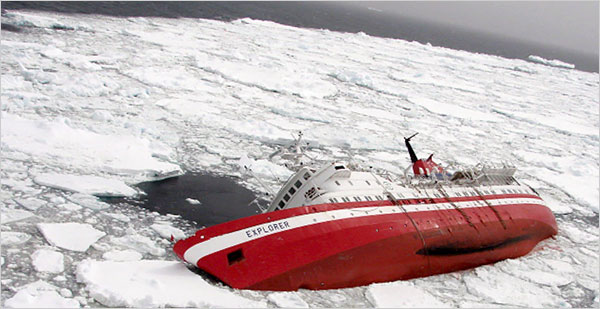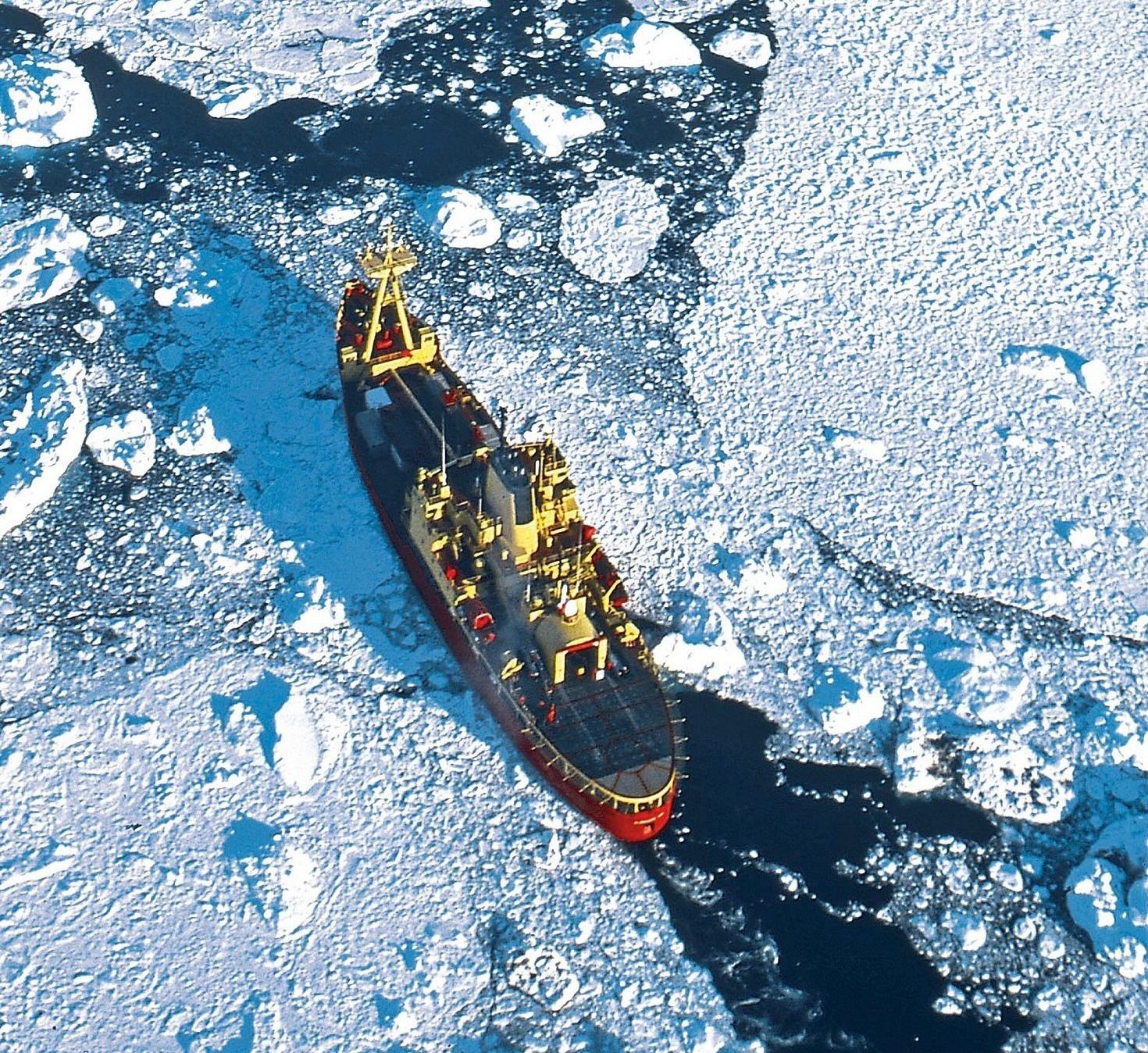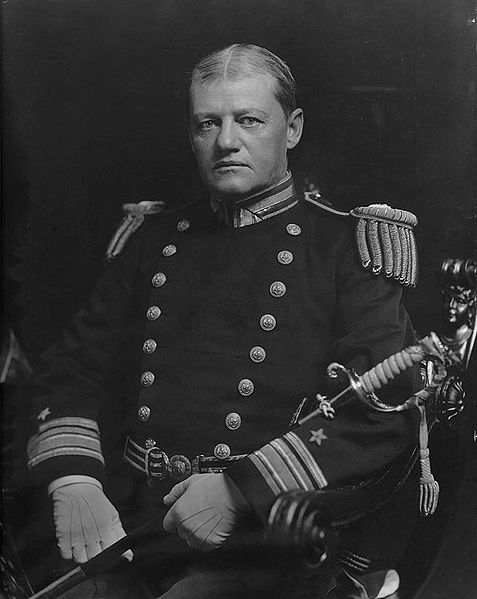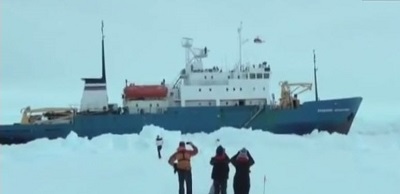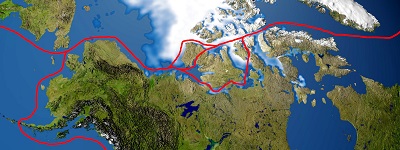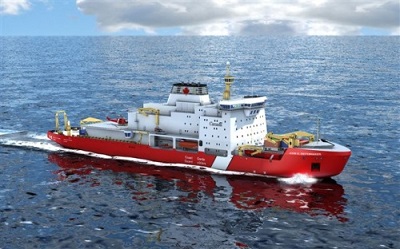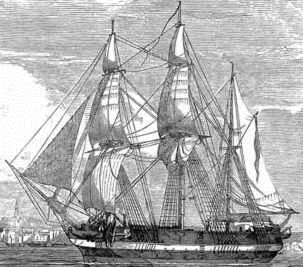The Southern Tide
Written by Wilder Alejandro Sanchez, The Southern Tide addresses maritime security issues throughout Latin America and the Caribbean. It discusses the challenges regional navies face including limited defense budgets, inter-state tensions, and transnational crimes. It also examines how these challenges influence current and future defense strategies, platform acquisitions, and relations with global powers.
“We focus on partnerships…Our partners want to work with us. They want the advantage of the United States education, training, exercises and military equipment. It’s the best in the world. And so it’s up to us to deliver that in a way that’s relevant and also provides a return on investment for American taxpayer. So that is our focus.” –Navy Adm. Craig S. Faller, commander of U.S. Southern Command, before the Senate Armed Services Committee July 9, 2019.
By Wilder Alejandro Sánchez
The Ecuadorian coast guard vessel Isla Santa Cruz escorted the Peruvian training vessel BAP Unión while the latter sailed through Ecuadorian waters as part of a training mission in mid-May. While cordial encounters at sea between ships belonging to friendly navies are quite common, a curious fact about this meeting is that both vessels were manufactured domestically by local state-run shipyards.
https://gfycat.com/messynimblecentipede
Isla Santa Cruz escorts the Peruvian training vessel BAP Unión (Ecuadorian Navy photo)
The significance of this encounter cannot be overstated. The navies of Ecuador and Peru, in addition to other Latin American fleets, will certainly continue to acquire vessels and submarines from extra-regional suppliers for the foreseeable future. But the era of “Made in Latin America” ships is here.
Made in Ecuador, Made in Peru
Isla Santa Cruz (LG 43) is one of four coastal patrol boats, class LP-AST-2606, produced by the Ecuadorian state-run shipyard ASTINAVE. The vessel and its sister ships, Isla Marchena (LG 42), Isla Pinta (LG 44), and Isla Balta (LG 45), are based on a Damen’s Stan Patrol 2606 model. The vessels are operated by the coast guard, a part of the navy, and operate in Ecuadorian waters, which include protecting the maritime biodiversity of the Galapagos Islands, listed on the UNESCO World Heritage list. Isla Santa Cruz was commissioned in 2012.
As for training vessel Unión, the ship was commissioned in 2016. Built by the Peruvian state-run shipyard SIMA’s main facilities in Callao, the ship measures 115 meters in length, displaces 3,200 tons, has a maximum speed of 12 knots and can transport up to 250 officers, crew and trainees. Unión, named after a Peruvian warship that fought in the 19th century War of the Pacific, is the largest training vessel in Latin America. As part of training missions with future naval officers, Unión has also participated in international sailing competitions. For example, in 2017 Unión participated in Rendez-Vous 2017 Tall Ships Regatta, where the vessel won the race from Boston, Massachusetts to Charlottetown, Canada.
How Often Do Such Meetings Happen?
It is unclear how often locally built vessels meet in Latin American waters. Such meetings can occur via passing exercises (PASSEX), one vessel escorting the other as it voyages through territorial waters, working together in counter-narcotic operations, or via multinational exercises like PANAMAX or UNITAS.
For example, for UNITAS LIX (2018), held in Colombia, the host’s patrol vessel ARC 20 de Julio (PZE-46), manufactured by the Colombian shipbuilding corporation COTECMAR, and the Chilean OPV Piloto Pardo (OPV-81), built by the Chilean shipyard ASMAR, were deployed together. Similarly, UNITAS LVII (2017), held in Peru, included the participation of patrol boats BAP Río Pativilca (PM 204) and BAP Río Cañete (PM 205), built by SIMA, and the Chilean OPV Comandante Toro (OPV 82), built by ASMAR. This author has not been able to find confirmation that these locally-built vessels directly interacted in these exercises, but it is plausible.

Interestingly, even though there are a plethora of analyses in Spanish and Portuguese about what regional shipyards are producing and the status of regional navies, this author has not found previous research that discusses other instances of locally built vessels meeting at sea in Latin America. Figuring out how often these meetings occur would require exhaustive research through various news sources, including press releases and statements by regional navies, to keep track of when this type of meeting at sea occurs, and researching where each ship was built.
A Look at Ongoing Projects
In various analyses for CIMSEC (see the 2016 commentary “The Rise of the Latin American Shipyard”) this author has discussed the rise of Latin American shipyards, several of which are currently engaged in major construction projects.
Brazil is building four conventional submarines and one nuclear-powered submarine via the PROSUB program, in cooperation with the French shipyard Naval Group; the Chilean shipyard ASMAR is building an icebreaker and plans to construct at least two transport vessels, a project called Escotillón IV; and the Colombian shipbuilding corporation COTECMAR has manufactured a fleet of amphibious vessels (Buques de Apoyo Logistico y de Cabotage) for the local navy, while two units were sold to Honduras (FNH 1611 Gracias a Dios) and Guatemala (BL 1601 Quetzal). COTECMAR has also manufactured several patrol vessels based on a design by the German shipyard Fassmer. COTECMAR’s most recent project was the launch this past September of ARC Isla Albuquerque for the country’s Dirección General Marítima, commonly known as DIMAR, a part of the navy.
Both Colombia’s COTECMAR and Chile’s ASMAR have ambitious projects for the near future as well, namely the construction of frigates. The Colombian Navy wants to domestically manufacture frigates (a project called Plataformas Estratégicas de Superficie or PES for short) via COTECMAR to replace its aging Almirante Padilla-class frigates, but the project has been delayed. Similarly, the Chilean Navy’s high command aims to also domestically manufacture frigates by 2030.
Even the internationally sanctioned and economically crippled Venezuela is building domestic vessels. Case in point, a 24 April tweet by a Venezuelan military Twitter account shows a video of Centinela, a locally-manufactured speedboat which will be utilized by the national guard (Guardia Nacional Bolivariana) for coastal operations. At the time of writing, the Iranian forward-basing ship IRINS Makra, formerly an oil tanker, is transporting seven fast attack craft, apparently to be transferred to Venezuela. If this happens, it would be the first time in years that the Venezuelan Navy obtains foreign-made vessels, and highlights the service’s current status in which international suppliers of new ships are very limited in number (this author ahs discussed the status of the Venezuelan navy in a May 10 commentary for Strife, “The Venezuelan Navy: The Kraken of the Caribbean?”).
Both Ecuador and Peru have ongoing shipbuilding projects as well. ASTINAVE has teamed up with a German shipyard to build a multipurpose combat vessel. Even though the construction of the MPV70 MKII vessel has been delayed due to the COVID-19 pandemic, the Ecuadorian shipyard is upgrading and expanding its infrastructure. Specifically, the shipyard’s main facilities in Planta Centro will be expanded to cope with the new project as the combat ship will be manufactured and assembled in sections.
Similarly, Peru’s SIMA is building BAP Paita, a second landing platform dock (the first one, BAP Pisco, is already operational); while two coastal patrol vessels, BAP Río Tumbes and BAP Río Locumba, were commissioned this past March. SIMA’s facilities in Iquitos, in the Peruvian Amazon, also build vessels for the army’s and navy’s riverine operations.
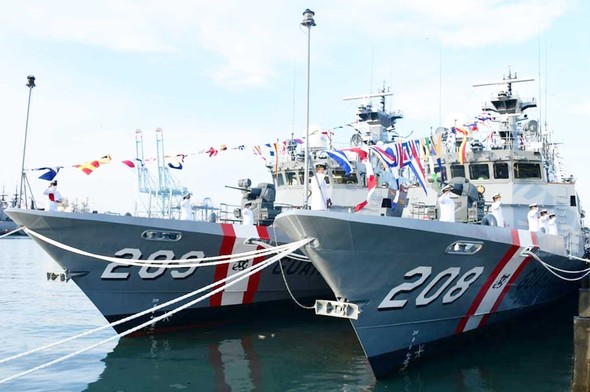
The Bad News: Argentina and Mexico
Unfortunately, there are shipyards in two countries that have been unable to move forward with new projects. After much fanfare, Mexico’s long range oceanic patrol project (Patrulla Oceánica de Largo Alcance or POLA) is not moving forward, as President Andres Manuel Lopez Obrador is not interested in having the local state-run shipyard ASTIMAR construct new units in partnership with Damen. Only one of this class has been built, the POLA ARM-101 “Benito Juárez.* On June 1, as part of the celebrations for the Mexican navy’s anniversary, the patrol vessel ARM Tabasco (PO-168) was commissioned. But this ship was originally launched in 2019 and it is unclear when ASTIMAR will receive orders for new ships (See Christian J. Ehlirch’s “The Evolution of the Mexican Navy Since 1980” analysis in Strife for more information about the status of the fleet.)

Similarly, Argentine shipyards like Rio Santiago and Tandanor are in limbo due to a lack of funds. Two outstanding projects include the construction of two training boats to train cadets (Lanchas de Instrucción de Cadetes or LICA), and one Small Waterplane Area Twin Hull (SWATH) hydrographic ship for the Argentine Navy. The Alberto Fernández administration is reportedly providing funds to finish both projects, however it is unclear when they will be launched.
Why Build at Home?
Navies and shipyards routinely advocate for the domestic construction of vessels, highlighting the advantages of such projects as compared to purchasing from international suppliers. The primary advantage is that domestically manufacturing ships, or submarines in the case of Brazil, means direct and indirect jobs for the citizens of the country where the shipyard is located. SIMA, for example has three facilities across Peru: Callao and Chimbote in the coast, and Iquitos in the Amazon. Similarly, ASTINAVE is preparing to expand its main assembly facility. More shipbuilding orders and new facilities mean more jobs.
For navies, building at home is also preferable as the naval officers and sailors can observe first-hand how a new vessel is built, from the keel laying to the launching of the ship. Shipyard employees are also more intimately aware of the technical aspects of new ships, which can considerately quicken maintenance and repair operations.
Moreover, building at home decreases a dependency on extra-regional suppliers. For example, a navy without a local functioning shipyard that plans to acquire new vessels in order to replace old units may have to settle for what is available on the international market (e.g. used or decommissioned vessels) depending on budgetary issues.
Finally, it is important to keep in mind that building new vessels involves a learning curve. By building at home, technicians and the leadership of navies and shipyards will become more ambitious and will aim to build more complex platforms. A quick summary of ASTINAVE’s and SIMA’s projects in the past decade exemplify this learning curve, and also what one could call an “ambition curve.”
ASTINAVE built Isla Santa Cruz and three other small coastal patrol craft in the first half of the 2010s, then two 50 meter offshore patrol vessels (Isla San Cristóbal and Isla Santa Isabel, delivered in 2017), and now is preparing to build a multipurpose combat vessel. Similarly, in recent years, SIMA’s facilities in Callao and Chimbote have built six coastal patrol vessels, a training vessel, and now two complex landing platform docks (this list does not include riverine vessels built by SIMA-Iquitos).
Without a doubt, there is a level of technological capability and expertise that many shipyards do not possess. Hence it is highly implausible to assume that Latin American navies will stop relying on extra-regional suppliers for warships, submarines, coastal patrol vessels or transport ships in the near future. Even a second-hand warship from an “A-class” navy is more technologically advanced than what some regional navies currently operate or can hope to build domestically. Nevertheless, as has been demonstrated in this commentary, many shipyards have the ambition which, if financially supported by their respective governments, will translate into more complex vessels being built in regional shipyards in the near future.
The Ambition for More “Made in Latin America” Ships
Nowadays, occasional tensions and some border disputes notwithstanding, the possibility of inter-state warfare in Latin America and the Caribbean is quite low. Nevertheless, navies must possess minimum deterrent capabilities. Moreover, they have other non-defense tasks, such as combating maritime crimes like illegal, unreported, and unregulated fishing; drug smuggling; participating in search and rescue; and HA/DR operations.
To carry out these numerous missions, navies must operate modern vessels with different capabilities. While many navies are acquiring brand new vessels – Argentina is acquiring four offshore patrol vessels manufactured by French shipyard Naval Group– due to budgetary issues or what is available in the international market, some services are sometimes forced to acquire decommissioned vessels or ships that do not exactly match the service’s requirements. The result are Frankenstein’s monster-type fleets, with ships of various origins. Over the past decade, Latin American shipyards like Ecuador’s ASTINAVE and Peru’s SIMA have provided an important alternative regarding the procurement of new ships.
The meeting of Ecuador’s patrol vessel Isla Santa Cruz and Peru’s training vessel Unión in Ecuadorian waters was not solely a standard encounter of two friendly navies. It highlights the current status and trajectory of many Latin American shipyards, which are building more technologically complex ships for their respective navies. By the time the young Peruvian cadets aboard Unión become senior officers, this type of meeting on the high seas may become the norm across Latin American waters.
Wilder Alejandro Sánchez is an analyst who focuses on international security and geopolitics. The views expressed in this article belong to the author alone and do not necessarily reflect those of any institutions with which the author is associated.
*The ARM Reformador (POLA-101) was renamed to POLA ARM-101 Benito Juárez.
Featured Image: March 2017 – COTECMAR delivers OPV ARC Victoria to the Colombian Navy (COTECMAR photo)


